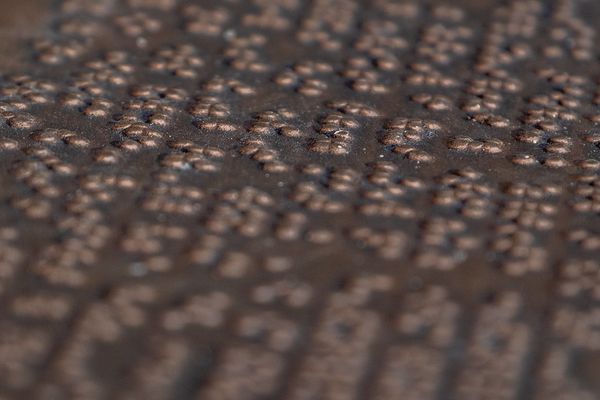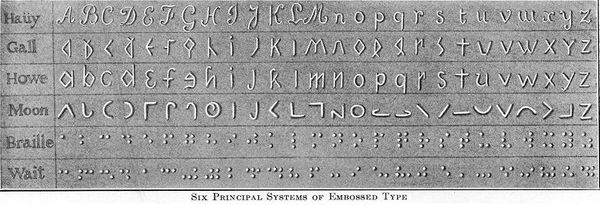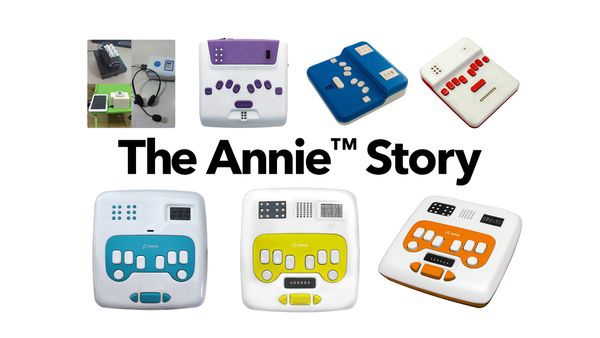Why Braille Matters Today: Communication, Education, and Technology
In a line - Braille matters today for the same reasons any other language script does. It’s a vital and vibrant means of communication, education, and making community for people with visual impairments. Still, some argue that Braille is falling to the wayside as assistive technology such as screen-readers help people ‘read’ standard scripts. However, there are still several elements of Braille that have made it valuable for millions of people for nearly two centuries - it’s important to understand why this is, and how these strengths of the script are still relevant today.
The Original Strengths of Braille
Braille is essential, and essentially personal. With its worldwide presence and recognition, Braille has been, for many decades, the primary means for visually impaired persons to read and write - and even type. Researchers such as Dr. Ruby Ryles, a blindness researcher at Louisiana Tech University, have noted a strong correlation between the ability to read Braille and a higher educational level, a higher likelihood of employment, and a higher income, especially when learnt at a young age.
With the recognition of Braille’s importance and changes in Braille production mechanisms, Braille text has become cheaper to make in recent years, making its proliferation more widespread. It’s grown to be useful at work as a fast and efficient way to make notes in meetings and to review long printed documents. It’s not rare to find public signs with Braille texts to help blind people navigate.

Within the home, being able to label clothing, food packaging, and domestic appliances around the home with Braille helps blind or visually impaired people live independently. Items such as washing machines can be made accessible to a blind person such as by having raised or clear print markings on the controls to indicate the different settings or uses of each knob or dial.
Perhaps the most important aspect of Braille, however, has been the personal and private autonomy that the script allows its users in expressing themselves, their needs and wants. It’s not simply a means of writing and reading - Braille is to many visually impaired and blind people, an inseparable component of their life and identity. Dr. Fredric Schroeder found in his work with visually impaired persons that Braille literacy “seems to represent competence, independence, and equality, so the mastery and use of Braille played a central role in the development of their self-identities as persons who are capable, competent, independent, and equal.”
Braille usage is also an indication to the visually impaired community that sighted society cares about their rights and needs. Presenting information and working on the widespread use of Braille helps the community feel that her values as a human are respected.
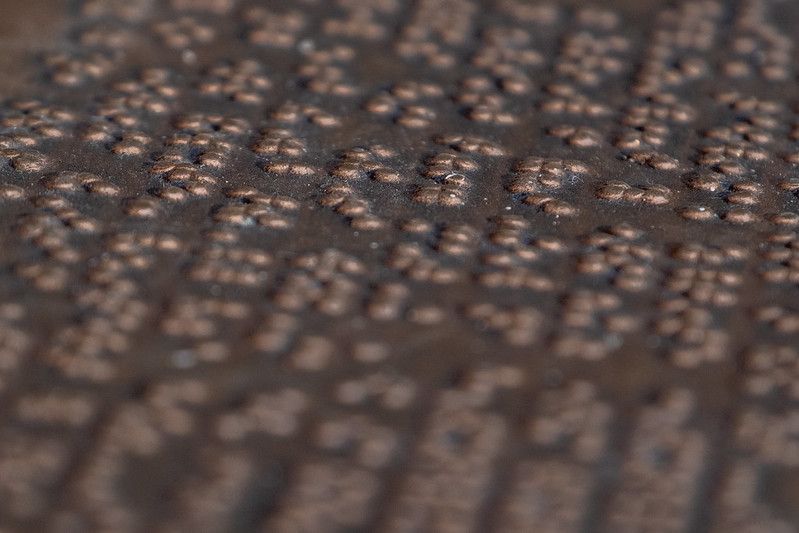
Braille is personal like all language is. Having information in Braille ensures more protection for private lives. It’s personal when reading an email on a refreshable Braille display. It’s personal when one grabs the right credit card because it’s labeled, or when fishing around in the refrigerator reading labels.It’s personal when a letter arrives typed in Braille. It is personal in the simple act of reading a book. Even for children, reading on their own is a special pleasure that shouldn’t be denied to them. Literacy helps stimulate children’s learning abilities, their imaginations and creative skills, and helps them communicate in the language they’d use in their everyday lives. Braille also helps people with visual impairments ‘read’ things that we might not immediately think of as texts, such as music codes and notations, and Nemeth for scientists and mathematicians.
Communication in the Technological Age
With the rapid development and spread of new communication technologies, the way we use language has changed quite a bit. The speed of communication has gone up, and it’s generally much easier to use these tools. Communication has, in many ways, ‘gone paperless’ as information in the form of text and images are displayed on our phones and computer screens. And with tools like autocorrect and predictive text, spelling and grammar can be managed by the devices we use.
But sighted people still learn the alphabet, grammar, writing and other standard tools of language in school. It turns out that no matter the changes that technology brings, the fundamentals of learning and using language don’t change. While it might be possible to use language scripts digitally, their analogue roots are still vital knowledge.
Communicating with Braille Today
Braille is no different - it’s personal, no matter the technology used to access it. Some blind people say that advances in assistive technology, such as audio books, voice-recognition software, and computer screen-readers, have rendered Braille redundant, and point to the cumbersome nature of many Braille books. But the unique strengths of literacy have yet to be replicated by such technology.

Braille offers its readers and writers the direct connection to language with “seeing” words with one’s fingers. The autonomy that Braille offers means a visually impaired person doesn’t need to rely on technology for their everyday routines to go smoothly. Tech breaks down - it’s expensive and slow to repair. It is critical to think about the position we place individuals in when they don’t have access to Braille skills in this place. Technologies like television and the internet haven’t made language script for the sighted obsolete, or replaced the need for a sighted child to learn to read; why should Braille be any different?
Technology can potentially supplement Braille - after all, it multiplies the modes of interaction with the world, and hence enables visually impaired people to parallel sighted people in communicating with each other. Advances in technology have made Braille more widely available and accessible than it might’ve been in the past.
Software tools, Braille displays, and embossers can, for example, translate any document into Braille quickly and accurately. Thousands of Braille books are available from Internet-based services. BrailleType, a single-touch text-entry system for touch screen devices allows the blind user to enter text as if they were writing Braille using the traditional 6-dot matrix code. The Android OS has a built-in Braille keyboard. Braille can continue to move off the page, to electronic displays, portable devices that can hold many more pages of script than a book, and can support touch with haptics and audio.

Besides digital technologies, there are also several hardware-based ‘low tech’ options for the use of Braille. Older methods of writing and embossing in Braille have gotten cheaper and easier to duplicate. 3D printing reduces costs of production of Braille texts. Non-digital devices like the Perkins Brailler and refreshable Braille displays that bring Braille writing and reading to many more people have been important innovations. Several devices now offer multi-line Braille reading. With the lowering costs of these innovations in Braille, the script will grow to be even more accessible to many more users.
Learning (with) Braille Today
The personal nature of Braille is a double-edged sword when it comes to learning Braille. The close attention students need in order to ensure accuracy and fluency in Braille is often difficult for a small number of trained teachers to provide. There is a shortage of teachers who are qualified to teach Braille. There is a lack of tools that make learning Braille as accessible as learning print. School architectures and other aspects of learning environments aren’t often visual-impairment-friendly.
The pedagogies involved in teaching Braille have so far tended to involve human-based face to face interaction in classroom settings. But today, technology enables teachers to adapt new pedagogies that take this base and build on it. This is true for learning for both the visually impaired and the sighted - but in specifically differing ways. While sighted students have already had access to an array of such educational technologies, the existing systems of Braille learning are open for modernizing and upgrading in inventive ways.

There are a number of learning aids, tools and technologies quickly gaining popularity in the learning of Braille. They can be something as simple as LEGO’s Braille Bricks which form a letter, number, or math symbol in Braille printed with tactile symbols that aims to help children with visual impairments learn how to read Braille. Technology has the ability to empower the individual learner, making it possible for visually impaired children to take advantage of self-learning, multimodal, interactive and gamified learning materials.
This is tantamount to a paradigm shift in Braille learning: educational technologies can both enable self-learning as well as reap the benefits of a classroom setting. The relative portability of such tech means more materials can be used in the classroom with fewer equipment, reducing reliance on difficult-to-handle quantities of Braille texts by bringing all forms of Braille learning, i.e., reading, writing, and typing onto a single platform. It’s a multidimensional form of learning that helps overcome the pitfalls of the existing modes of teaching and learning.
The full potential of these initiatives, however, can only be realized in tandem with teachers. The role of the teacher can change - they no longer need to micromanage the learner, but help guide them on their learning journey. With multimodal technologies that combine audibility with tactility, these interactive paths of learning dynamically enable the learner to direct their own learning. These teachers themselves don't need to be retrained in the new tech - they’re intuitive enough to allow them to focus on developing effective pedagogies and overall classroom management.
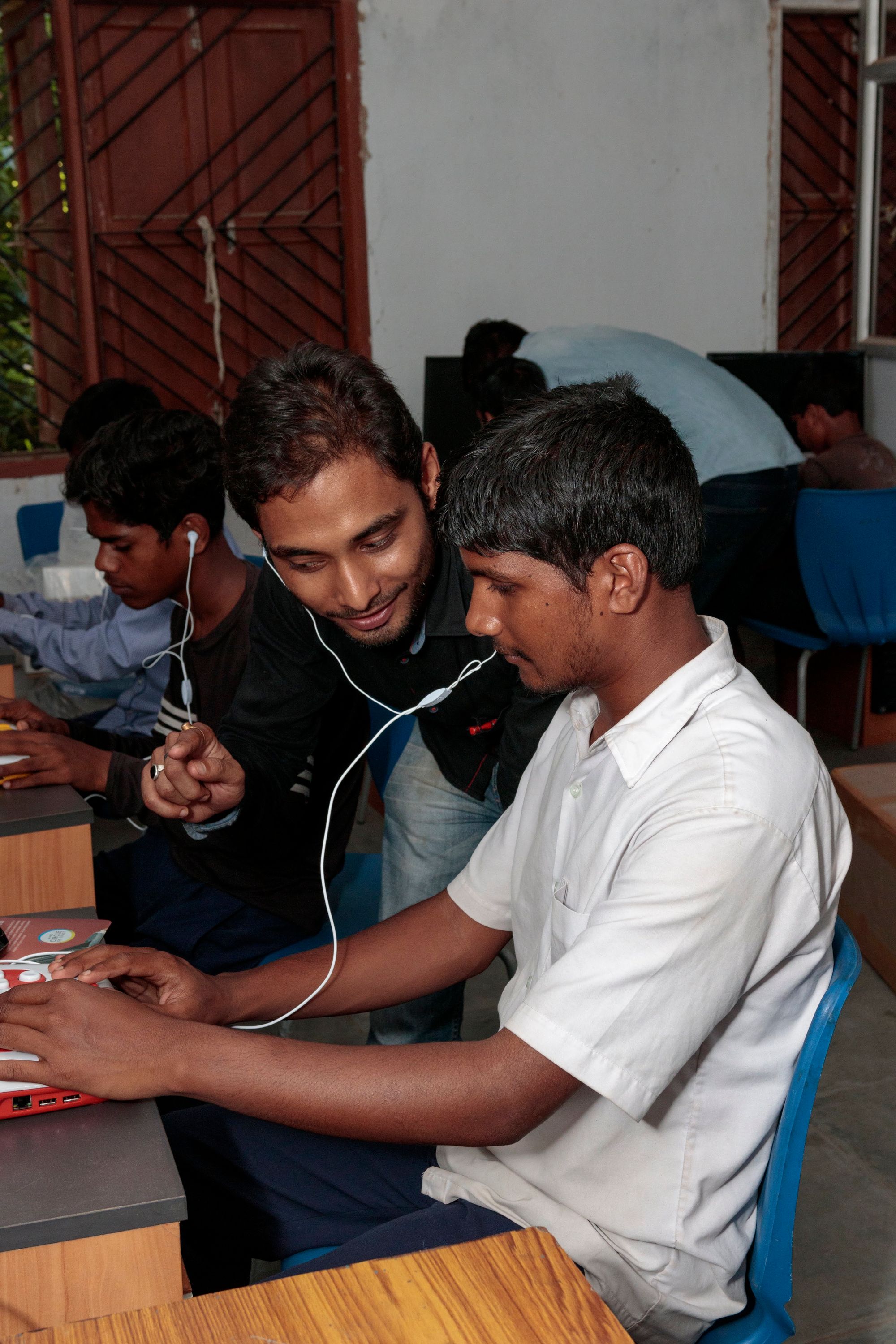
Students can increasingly access digital and online learning materials with the use of assistive technologies, but it is essential to choose resources that are accessible. For example, when lessons involve graphics, they can be Braille-based or tactile; class texts must be available in Braille, etc. Audibility might not be possible in every scenario but combined with Braille’s tactility, it can create multimodal interactive mechanisms and tools that, with new technologies, can be made dynamic for the situation at hand. New tech also allows such decisions to be made by the Braille user. Technology has the potential to leverage Braille to empower the visually impaired individual to access the education that is widely available to the sighted learner.
These efforts towards equity of access are especially important in inclusive classrooms where Braille texts can be incorporated into classroom instruction using a combination of electronic and hard copies. At all levels of schooling, such materials will enable visually impaired learners to engage with the class along with their sighted peers (without excessive extra apparatus that may seem to set them apart).
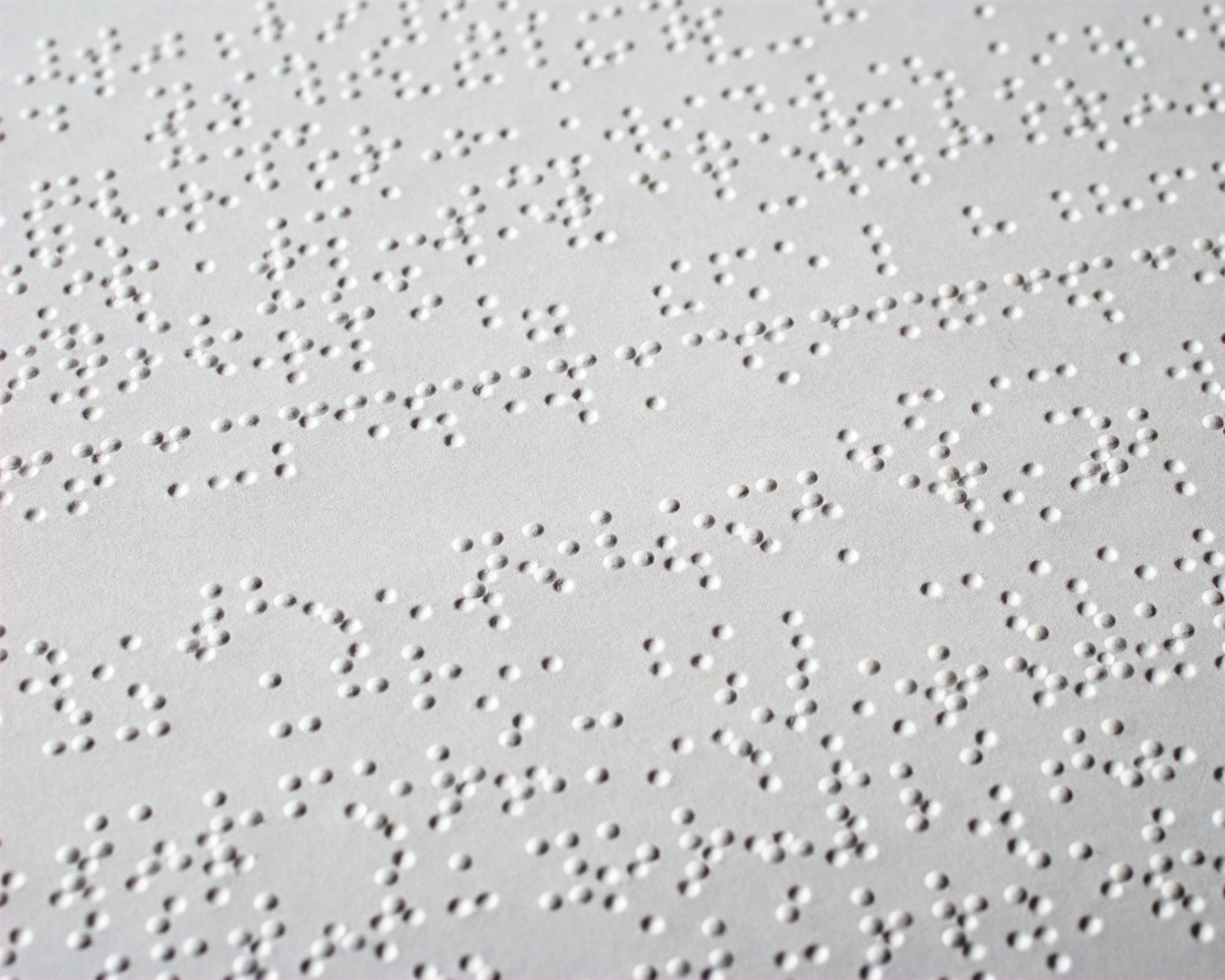
It helps students to have hard copies in cases where they may need to read quickly, as they’re comfortable in the tactility of Braille. The ability to see headings and subheadings in hard-copy Braille also contributes to one’s ability to learn materials. For notetaking, on the other hand, refreshable Braille displays and digital Braille tech like BrailleNote go a long way.
This kind of blend of Braille fundamentals with technology has been tried and tested with Thinkerbell Labs’ flagship innovation in Braille self-learning, Annie. By offering lessons in reading, writing, and typing in vernacular and English language Braille through standard tools like the Brailler and slate on a single device, Annie familiarizes young learners with the ways tech enables Braille use. The classroom environments we’ve designed to balance the learner-teacher relationship, the Annie Smart Class, have gone a long way in fostering an exciting and effective learning environment. Teachers can track student learning and performance and alter their pedagogies, refocus on certain aspects of study or certain students as necessary. Technologically, an Annie isn't resource-intensive yet it makes good use of what tech can do.
Braille and its Futures
Braille isn’t limited to text on the page or screen either. There’s a growing number of technological options that creatively use the tactile form of Braille to communicate an array of information. For example, there’s the haptic chair that could communicate to a blind person when the person opposite them is smiling, or frowning, and could instantly translate non-Braille text into haptic sensations that replicate Braille bumps. Blind Maps is a navigation device that syncs to a user’s iPhone, providing tangible feedback on the route through a Braille-like interface.
From the smart classroom (with technology integrated into the classroom and allowing the learner to participate on their own terms) to the smart city (Braille street signs through digital interfaces and Braille smart cards for public transportation), Braille is a touchstone for the visually impaired community’s interactions with their world, on their terms.
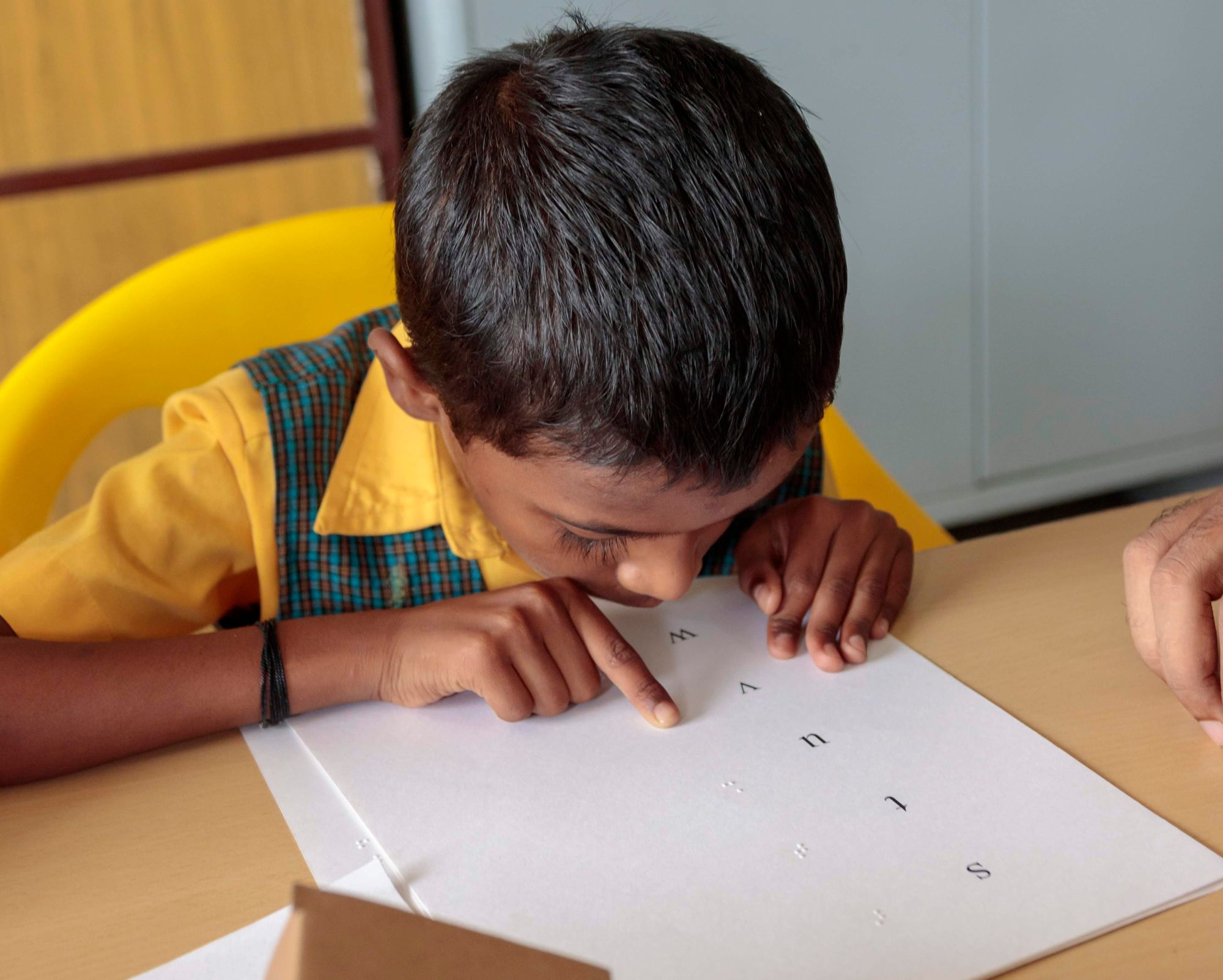
The Continuing Role of Braille Today (with Tech!)
It’s evident that technology has quickly found its place alongside much of a visually impaired person’s life, from their education to everyday communication. It’s also obvious that to succeed in school, work and life, blind people need the opportunities that literacy provides. In many developing countries including India, where Braille assistive tech is not yet commonplace, affordable or even available, Braille is the primary means to literacy for visually impaired persons.
Braille can also help augment employable skills with tech, using it where available to inculcate modern economic and productive skills. For example, they may learn state of the art digital and design skills which may even help some find employment as well as generating income from sales of products. People with visual impairments may themselves be involved in Braille production through tech like 3D printing, which can provide a viable means of employment. Employment for people with visual impairments can help individuals and communities be self-reliant.
To promote Braille literacy is a way to enhance every aspect of the lives of the visually impaired. From educational technologies like Annie to communication technologies like digital Braille, our technological age is not just for the sighted.

